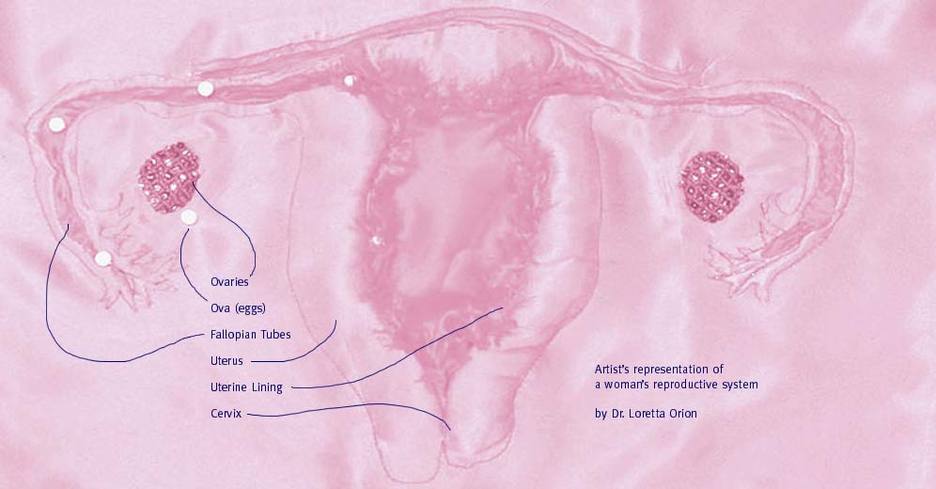What is an ovary?
An ovary is the essential female reproductive organ, it produces and stores a woman's eggs. The size of the ovary is that of a walnut and is one of a pair. The ovaries have a second important function, to produce Estrogen and Progesterone, chemical messengers that play a key role in the menstrual cycle.

What is ovarian cancer?
Ovarian Cancer is an abnormal or malignant growth located on the ovaries. The cause is unknown.
What are some major symptoms of ovarian cancer?
- Bloating
- Pelvic or abdominal pain
- Difficulty eating or feeling full quickly
- Urinary symptoms such as urgency and frequency
If symptoms persist for more than two weeks, make contact with your doctor, ideally a gynecologist and pursue the three pronged approach.
How do you test for ovarian cancer?
Currently there is no definitive screening test. Another reason we must work so hard to make people aware of this disease. What is suggested until a test is discovered is a Three-Pronged Approach:
- A pelvic exam: This allows the doctor to feel internally for any abnormalities.
- CA-125 BLOOD TEST: This measures the level of a protein named CA-125 which has been associated with ovarian cancer.
- Transvaginal Ultrasound: where sound waves are used to generate pictures of your organs. This can sometimes show abnormal growth.
None of the items alone is a fail-safe. However, combined, they are the best diagnostic tools we have. Much work is being done to create a definitive test. Much work needs to be done.
"I thought a Pap Smear tested for Ovarian Cancer?"
This is the biggest awareness misconception. A Pap Smear tests for abnormal cells of the cervix and is not an indicator of ovarian cancer.
Are there different types of Ovarian Cancer?
There are over thirty types of ovarian cancer, some are Epithelial, meaning they start from the cells covering the outer surface of the ovary. Some are Germ Cell which start from the cells that produce the egg.
Explain the staging and grading of Ovarian cancer?
The staging is broken into four levels: I, II, III, IV and is used to express how far the disease has spread within the body. The grading is broken into three levels: A, B, and C and is used to express how mature or active the cancer cells are. A diagnosis would be expressed, for example, as IIc. Stage IV is the most advanced stage.
Tell me something good!
When ovarian cancer is caught in its early stages it is highly treatable. AWARENESS is the most important tool. Don't allow potential symptoms to be rationalized or trivialized away.
TAKE ACTION!
Contact your state senators to promote funding for Johanna's law as well as to increase the Department of Defense's Ovarian Cancer Research Program's budget is underway. Take action today.
Where are we today?
Positive things are happening on the ovarian cancer forefront. Research into important facets of this disease continues. Theories of combining compounds to starve the growth of ovarian cancer cells. Identifying how sensitive a patient is going to be to chemotherapy by learning to identify a specific protein. Good things are happening as we find our way to a detection test and ultimately a cure. We can do our part by staying aware.
